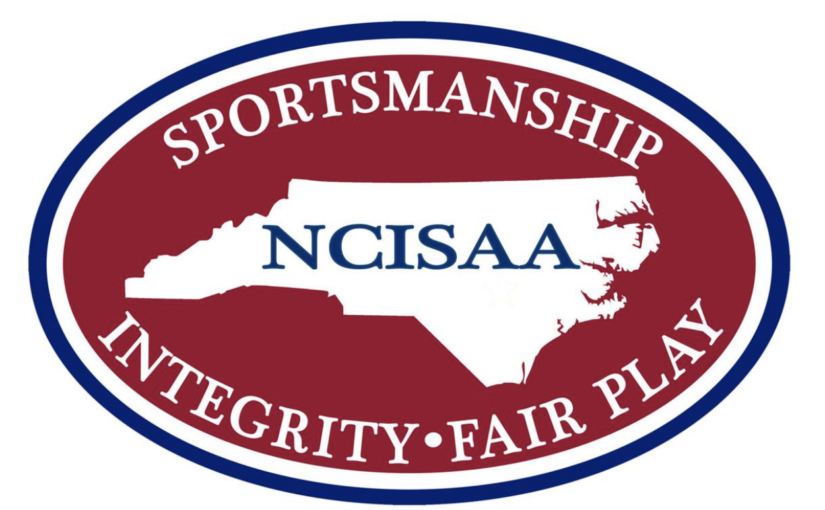Vision, purpose and values are crucial to athletic programs
After I graduated college, in a fit of reckless abandon that had nothing to do with my bachelor’s in history, I decided to become a coach. I was looking for something interesting, fun and not necessarily practical.
 My idea was always to be happy with my life and, hopefully, success would follow. I never became a high level coach. I started at the collegiate level, NJCAA DIII, then to NCAA Division III, dabbled in the ranks of the private high school and then finally returned to small college DIII. We did well, made playoffs when the team had not done so before, garnering praise from opposing coaches for our competitiveness and attitude. One year we even won the New England Collegiate Conference, advancing to the NCAA tournament.
My idea was always to be happy with my life and, hopefully, success would follow. I never became a high level coach. I started at the collegiate level, NJCAA DIII, then to NCAA Division III, dabbled in the ranks of the private high school and then finally returned to small college DIII. We did well, made playoffs when the team had not done so before, garnering praise from opposing coaches for our competitiveness and attitude. One year we even won the New England Collegiate Conference, advancing to the NCAA tournament.
Before joining St. Joseph’s, I was the associate athletic director at Yeshiva University, and I believed the leadership concepts there were universal. Introducing certain ideas into the mind of a head coach may or may not be done with a mindset that is different from that in a corporate setting. Many of us have coaching staffs made of part-timers who have careers outside of athletics. How we reach them and help them become their best should be no different than conversations they have with their supervisors at their full-time jobs.
How things are framed may be slightly altered; the interaction between boss and subordinate will undoubtedly be more casual than if they were full-time, but the concepts are the same.
Leadership alignment
One needs to preach departmental alignment of thought and direction from the very beginning. This can begin during the interview process, continue in the initial meeting with staffs and be emphasized throughout the year.
In my view, alignment is the most important concept when putting together a staff and leading it in a direction. This is affected by both internal and external entities but should be clear and apparent to the individuals of your team. A leader needs to be able to align the thought and direction of a team.
An essential quality of being a leader is not only to motivate for performance but also to ensure that every member is working toward similar goals, for the betterment of the institution. First, you must understand your own ideals, your own intrinsic motivators, then those of the institutions and finally of your staff.
As the leader, your job is to align those thought processes. I have found that my own ideals revolve around DIII athletics and the concepts of the true student-athlete. When looking for career advancement, I look for institutions that can fit into that concept and attempt to bring my team into alignment with our ideals.
At Yeshiva, we would hold academics and athletics in high regard while increasing professionalism and athletic success. I have made it clear to my team what I expect, which is to demand more than in the past. We wanted to rise above the idea of Yeshiva simply being an Orthodox Jewish college. I am not Jewish, which has made it an even more incredible learning experience. The coaches had to be on board with our new direction, and I explained how we would make strides in this direction while asking for opinions and ideas.
Consider what motivates you and why you wake up every morning. Why do you go above and beyond, work long hours and take phone calls or texts at all hours of the day? Consider how your ideals align with those of the institution, and take that into account when you make decisions, hire coaches or lead your team.
Your staff members are most likely no different than you. Show them your goals for the program, be transparent about the direction of the institution and determine how they may continue the strides that you and the institution are making.
Alignment is about being one unit, defining success in a similar fashion across the board and the process of connecting the ideals of the institution with the individual.
Vision, purpose and values
I use a model developed by the Global Leadership Council. I use these ideas in my current role, and they will undoubtedly stay with me throughout my career. They are so simple, and that is their beauty.
 Vision is your picture of the mission accomplished, purpose is your reason for being and values are beliefs about what is important. Vision is where you are going, purpose is what you do and values are why you do it.
Vision is your picture of the mission accomplished, purpose is your reason for being and values are beliefs about what is important. Vision is where you are going, purpose is what you do and values are why you do it.
Does your staff know the values of your department? More importantly, do you know your own values? You need to know what is important to you before you can disseminate your values amongst your staff. This may be the most important factor in leading and motivating, yet it is one of the most overlooked. Picture a pyramid with three levels; values are the base. This is what you come back to and what lays the groundwork for you as a person, a leader and your team as a whole.
Purpose is the reason your team does what it does. Is your goal to educate and elevate your team and yourself? That was a constant question at Yeshiva when we look for new team members. We tried to figure out their goals to identify how they would best fit in with our team.
While values, vision and purpose are ultimately developed as intrinsic motivating factors, the duty of the leader is to bring out these ideas in his or her team. Purpose is perhaps the main internal feature of a person. The greater philosophical question, “Why are we here?” permeates this idea.
You have to determine why you are in a leadership position and decide why the department exists. Then you get to the purpose of your team, both individually and collectively. If you do not know your team’s purpose, you can simply inquire with an open mind.
That is what I did, and it gave me insight into who my staff members were as people. I did this through email, although you could do it in person, and their responses revealed more about themselves than I had ever imagined. You do have to earn the trust of your team to do this. Their responses are only to learn more and help you learn how to best lead them.
They shared stories of life skills learned, fears overcome, their ideas of being a role model, tragedies and successes, helping young people reach their potential, challenges and failures. Whether they realized it or not, they described who they were as people.
My softball coach spoke of affecting people’s lives, my assistant athletic director relished the idea of being a role model for young women and being a champion for equality, and my men’s and women’s basketball coaches discussed the idea of bringing people together as a team and working as one unit.
My men’s soccer coach said, “I believe college is the very end of childhood … I want to be the first coach to hold the players accountable for ethical and moral choices.”
If you know your team, the responses go much deeper than words on paper. This is an excellent exercise for any administrator or coach to undertake, and I encourage everyone to use it.
At the top of the pyramid is vision, the key to inspiration. Whatever your role, you must have a vision in order to achieve anything. Does your staff know your vision? If not, why?
The seed of the vision often begins with the leader, who explains and discusses it. Through conversation and consensus building, a team creates the most effective goals with buy-in from everyone. It is your job to ensure that all move in the same direction, toward the same end.
Everyone has his or her own goals, but there must always be a departmental vision. And you must also craft a vision for yourself. The role of a leader is to motivate everyone. Make your staff members care about the vision, and create ownership so that the vision aligns with their goals.
There are many techniques to accomplish this, and all leaders struggle with it. My successes in this realm have come by garnering input from the staff. This has worked for me as a coach and administrator. Ask questions, allow them to speak their mind, share their ideas and look into implementing ideas fall in line with the program.
Do not change your entire vision because of what you hear. Remember, you are the leader and are simply collecting information to better align individuals under your leadership; to create ultimate success, however that is defined by you. Keep what is important to you, and do your best to convince your staff members why it is also important to them.
The takeaway
The traditional concept of carrots and sticks, rewards and punishments, does not work to motivate your staff. No matter how much we believe the focus should be on winning, championships, improvement of team and players, the fact of the matter is that in order for someone to be truly invested in team goals, it has to go deeper. It has to stem from values, purpose and vision.
We must go beyond the mundane daily tasks, politicking and what a department appears to be to the outsider — successful or not in wins and losses — and reach for our greater, higher-level ideas. The key is finding that deeper meaning and aligning your entire department in that direction.
Your role is to communicate, explain, help to foster understanding and ask questions about how the staff views and feels about the concepts. Not enough leaders do this. The vast majority of staffs do not understand the overarching vision and are not aligned in the same direction.
It is difficult to do, to first articulate your direction and communicate it effectively. But it is the essence of leading and motivating your team.





